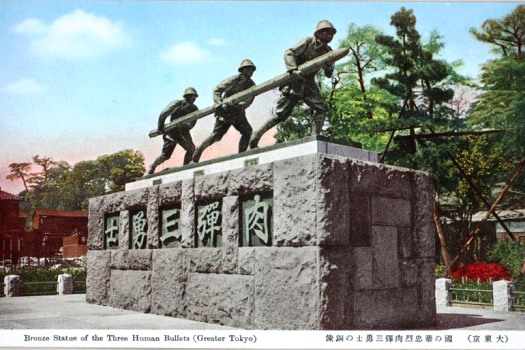This week: how did three soldiers who managed to do something rather unexceptional–dying in Japan’s battles in China–manage to become the centerpiece of a state-run cult of heroism?
Sources
Kramer, Hanae and Scott Kramer. “Bakudan San’yushi: The Three Heroes of Shanghai” in Fanning the Flames: Propaganda in Modern Japan, edited by Kaoru Ueda.
Ohnuki-Tierney, Emiko. Kamikaze, Cherry Blossoms, and Nationalisms: The Militarism of Aesthetics in Japanese History.
High, Peter B. The Imperial Screen: Japanese Film Culture in the Fifteen Years’ War, 1931-1945.
Images and Media
A recording of the Nikudan San’yushi no Uta


FYI, there’s a great late ‘60s Nikudan film directed by Kihachi Okamoto and produced by The Art Theater Guild: https://japanonfilm.wordpress.com/2020/12/06/human-bullet-nikudan-1968/
The statue at Seishoji was removed shortly after the US occupation. However, you can see a bronze memorial plaque about the three soldiers at the left giant ishirodo lantern, at Yasukuni shrine (the left lantern has memorial plaques about the army and the right about the navy). I visited the place just today, after reading your post. You’re awesome!